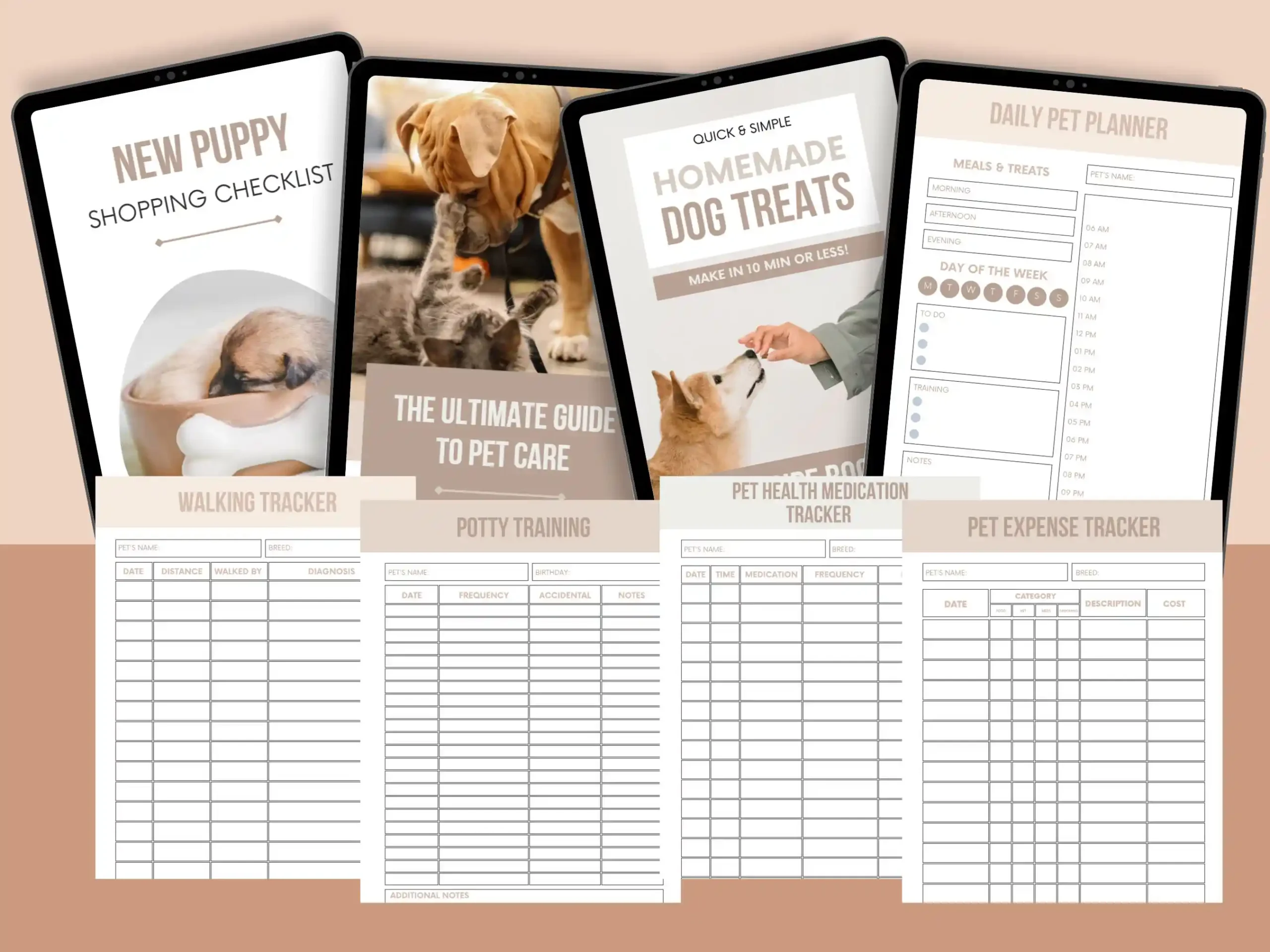Is your furry friend uncomfortable on the cold, hard floor of their outdoor kennel? We all want our pets to be comfortable, right?
So, why settle for the bare minimum when you can create a cozy outdoor haven for your dog?
Here, we’ve got the cozy and durable dog kennel flooring ideas to keep your pup warm, no matter the weather.
1. Artificial Turf
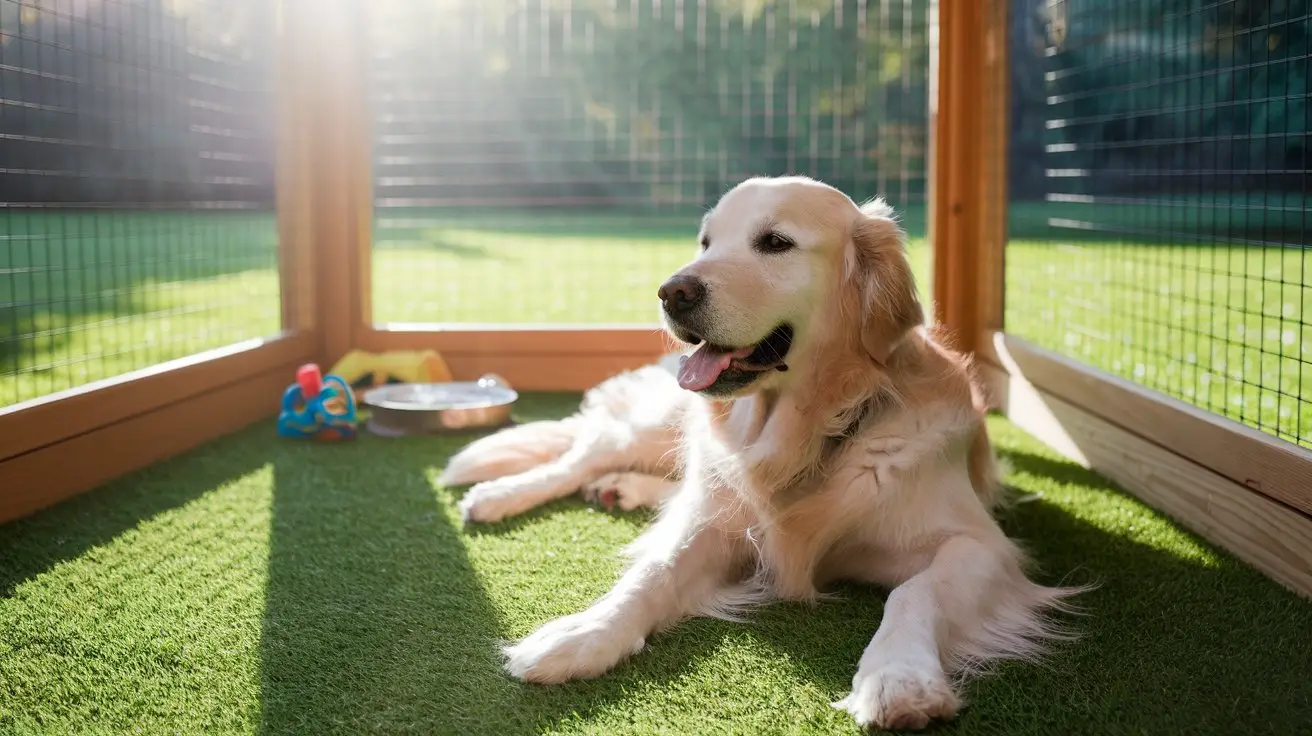
Artificial turf is like having a forever-green lawn for your dog. It’s perfect for dogs who love grass but hate the mud. Modern pet turf has special drainage holes and antimicrobial treatments. Just spray it down with a hose to clean, and your dog will have a comfy spot year-round.
| Pros | Cons |
|---|---|
| Easy to clean | May need replacement every 3-5 years |
| Looks natural | Can hold odors if not maintained |
| Good drainage | Can get hot in direct sun |
| Comfortable for dogs | |
| Works in all seasons |
People also like: 15 Best Dog Kennel With Veranda Designs
2. Rubber Mats
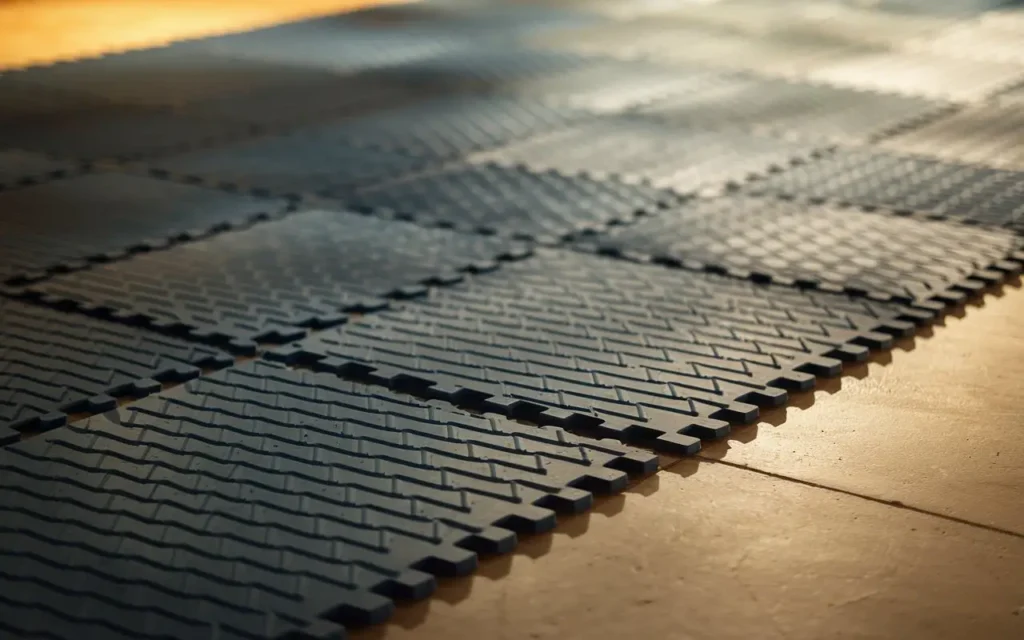
Rubber mats are like putting a gym floor in your dog’s space. They come in different thicknesses and sizes. The mats absorb shock and are especially good for older dogs or those with joint problems. Most mats can be easily cut to fit your kennel size.
| Pros | Cons |
|---|---|
| Soft on joints | Can be chewed by some dogs |
| Non-slip surface | May move around if not secured |
| Weather resistant | |
| Easy to clean | |
| Affordable |
3. Pea Gravel
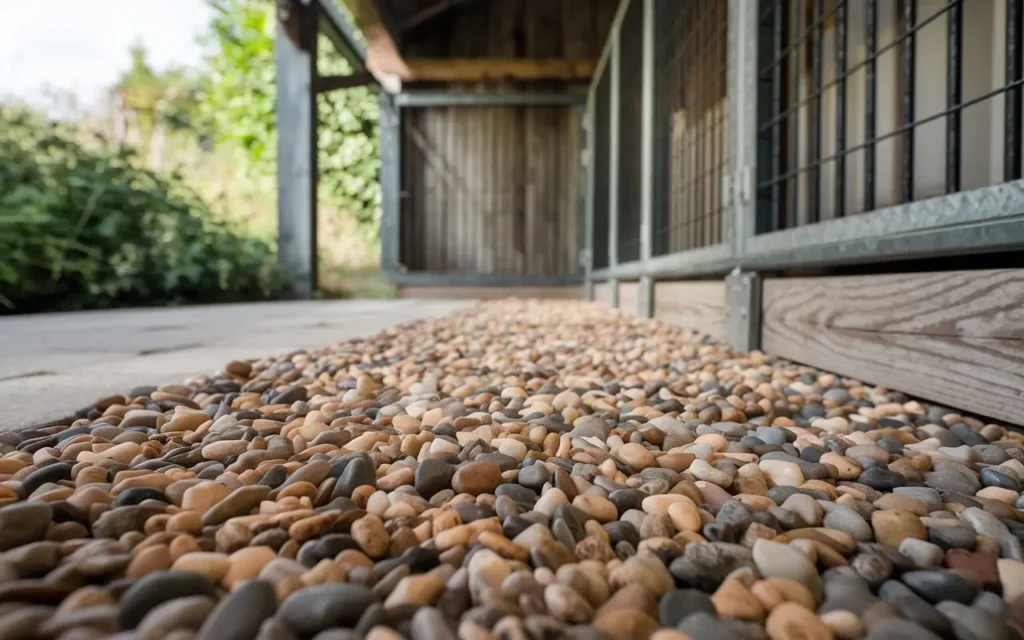
Pea gravel is smooth, round stones about the size of peas. Dogs like the natural feel, and it stays cooler than artificial surfaces. It’s great for drainage and doesn’t turn muddy like dirt. You’ll need about 2-3 inches depth for good coverage.
| Pros | Cons |
|---|---|
| Excellent drainage | Can get scattered |
| Natural look | Harder to clean waste from |
| Cool in summer | Can get stuck in paws |
| Low maintenance | |
| Affordable |
4. Concrete with Epoxy Coating
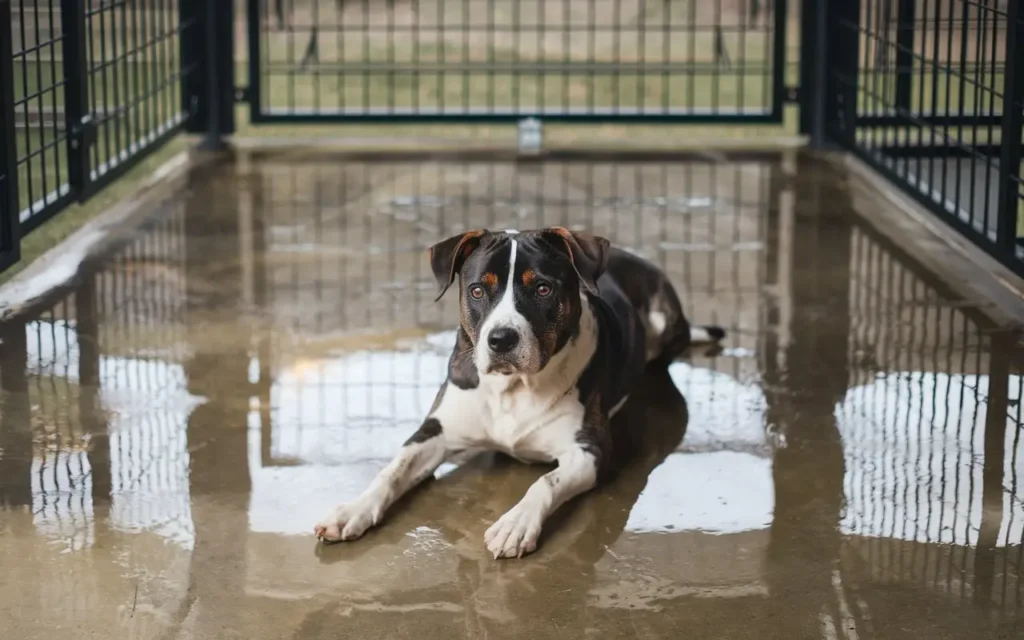
Concrete with epoxy is like giving your kennel a forever floor. The epoxy coating makes the concrete easier to clean and adds grip. It’s practically indestructible and perfect for dogs that dig. Adding rubber mats on top can make it more comfortable.
| Pros | Cons |
|---|---|
| Super durable | Hard surface (needs bedding) |
| Easy to sanitize | Can be cold in winter |
| No replacement needed | Requires professional installation |
| Won’t harbor bacteria | Can be slippery when wet |
| Weather resistant |
5. Raised Grid Tiles
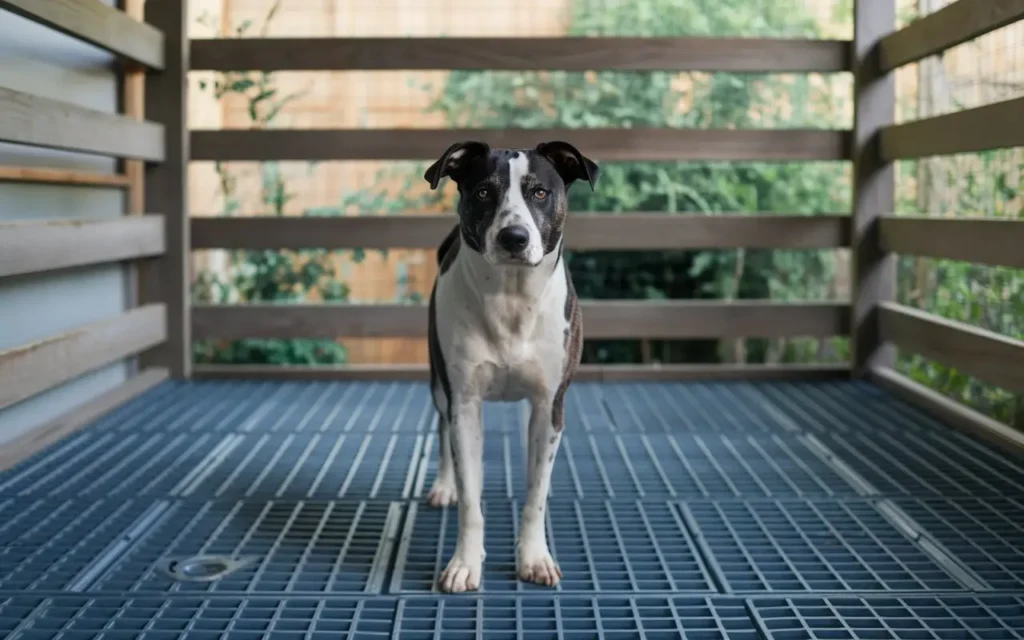
Raised grid tiles are like mini-decks that lift your dog off the ground. They’re perfect for wet areas because water flows right through. The tiles snap together like puzzle pieces and can be taken apart for deep cleaning. They’re especially good in rainy climates.
| Pros | Cons |
|---|---|
| Great drainage | Small items can fall through gaps |
| Easy to clean | Requires flat surface underneath |
| Keeps dogs dry | |
| Good air flow | |
| Reduces odors |
6. Rubber Mulch
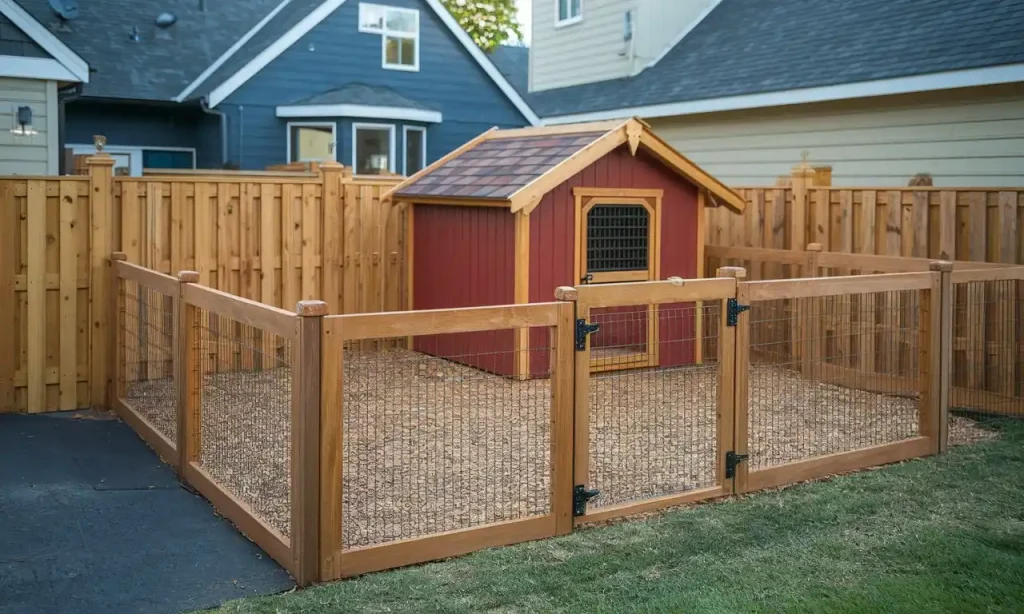
Rubber mulch is made from recycled tires and looks like regular mulch. It’s bouncy and comfortable for dogs to walk on. Unlike wood mulch, it won’t rot or attract bugs. It comes in different colors and stays in place better than regular mulch.
| Pros | Cons |
|---|---|
| Soft landing | Needs containment borders |
| Good drainage | May need occasional raking |
| Long-lasting | |
| Temperature stable | |
| Safe if swallowed |
7. Cork Flooring
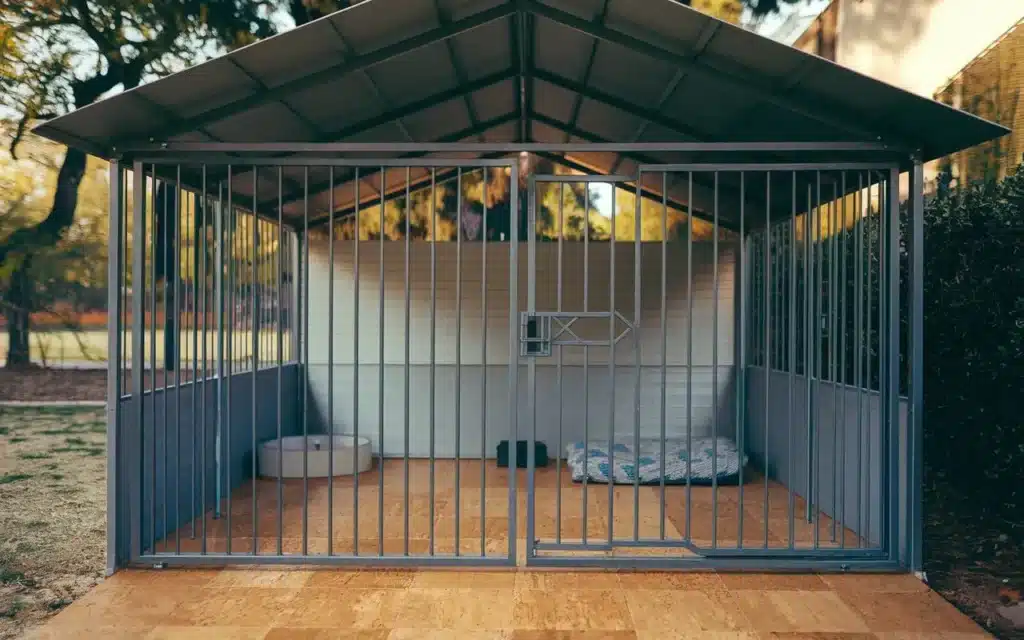
Cork is a natural choice that feels warm and cozy. It’s like giving your dog a soft, springy surface to rest on. The material naturally fights bacteria and mold. It’s better for indoor/covered kennels since it needs protection from heavy rain.
| Pros | Cons |
|---|---|
| Natural material | Can be expensive |
| Soft and warm | Can be damaged by scratching |
| Good insulation | Regular maintenance required |
| Antimicrobial | |
| Comfortable |
8. Interlocking Deck Tiles
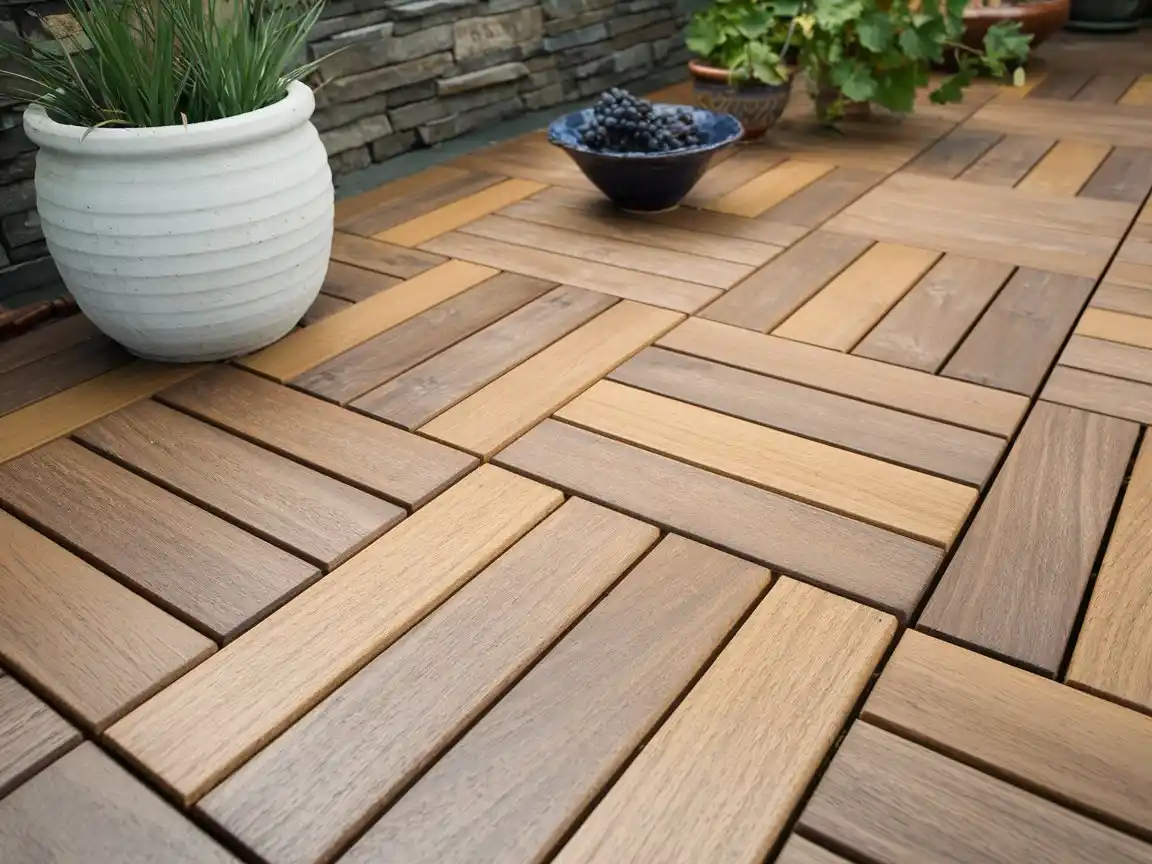
Deck tiles come in wood or composite materials and snap together easily. They provide good grip and look nice. The tiles stay cooler than concrete and provide some cushioning.
| Pros | Cons |
|---|---|
| Easy installation | More expensive than some options |
| Good drainage | May need occasional resealing |
| Attractive look | Can show wear over time |
| Comfortable surface | |
| DIY-friendly |
9. Play Sand
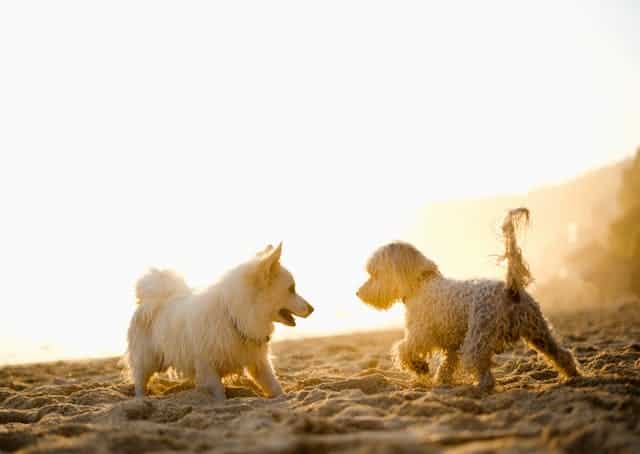
Play sand is like giving your dog a personal beach. Many dogs love to dig in it, making it a fun surface. Use clean play sand, not construction sand. You’ll need about 4-6 inches depth and good drainage underneath. Also, provide some
| Pros | Cons |
|---|---|
| Natural material | Gets tracked everywhere |
| Inexpensive | Needs regular raking |
| Dogs love it | Gets muddy when wet |
| Good drainage | |
| Cool in summer |
10. Hay or Straw Bedding
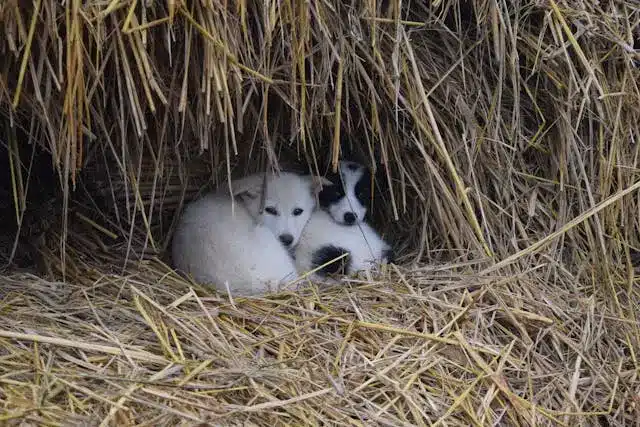
Hay or straw is especially good for cold climates and winter use. Replace it regularly to keep it fresh and dry. Make sure to use fresh, clean straw or hay to avoid mold and pests.
| Pros | Cons |
|---|---|
| Very warm | Attracts insects |
| Natural material | Can be messy |
| Inexpensive | Not good in wet weather |
| Comfortable | |
| Good insulation |
Wrapping Up: Can’t Decide Which One to Get?
Why not have it all? Mix and match different flooring types like you’re creating a doggy obstacle course.
A little rubber here with some turf there, your pup will think they’ve hit the jackpot of sensory experiences.
But remember, the best flooring depends on your climate, your dog’s needs, and your budget. With a little effort, you’ll have a kennel so cozy, you might just find yourself hanging out there too!

